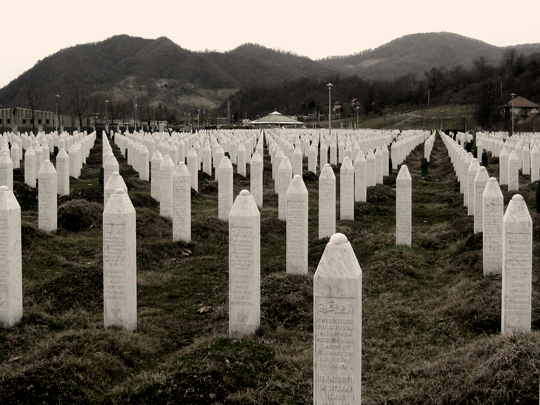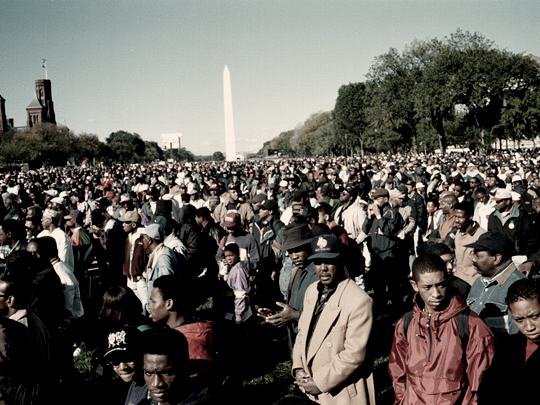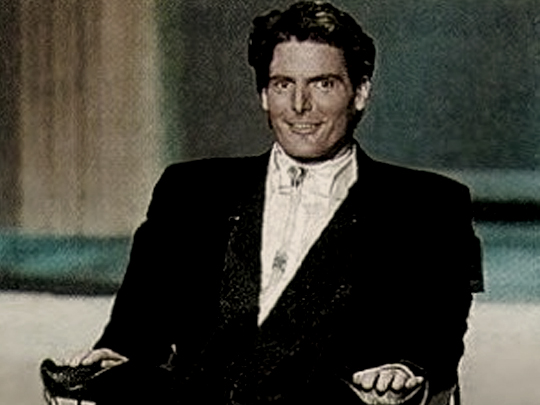Flickr / CC-BY-SA-3.0 / GFDL
1 – Oklahoma City Bombing
The Oklahoma City bombing was a domestic terrorist truck bombing on the Alfred P. Murrah Federal Building in Oklahoma City, United States on 19 April 1995.
The attack was carried out by Timothy McVeigh and Terry Nichols, just after 9 am, killing 168 people, including 19 children who were in the building’s daycare center, and injuring over 680 others.
One-third of the building was destroyed, while over 300 other buildings were destroyed or damaged.
The Oklahoma City bombing was the deadliest terrorist attack in the history of the United States until the September 11 attacks in 2001 and remains the deadliest domestic terrorist incident in U.S. history.
Less than two hours after the bombing, McVeigh was stopped by Oklahoma Highway Patrol for driving without a license plate and was arrested for illegal weapons possession.
Evidence from the investigation quickly linked McVeigh and Nichols to the attack. McVeigh, a decorated Gulf War veteran, had detonated the truck full of explosives, while Nichols had assisted with preparing the bomb.
McVeigh was opposed to U.S. foreign policy and the federal government’s handling of the Ruby Ridge incident, where a stand-off over a bench warrant for Randy Weaver resulted in the deaths of a Deputy US Marshal, Weaver’s wife, Weaver’s 14-year-old son, and Weaver’s dog.
This incident was followed by the Waco siege a year later, where a fire ended the FBI’s siege at the Branch Davidian compound in Waco, Texas, killing 76 people. McVeigh timed the bombing to coincide with the second anniversary of the Waco fire.
In 1997, McVeigh and Nichols were tried and convicted, resulting in McVeigh being executed by lethal injection on 11 June 2001, while Nichols was sentenced to life in prison.
After being identified as accomplices, Michael and Lori Fortier testified against the two men. Michael was sentenced to 12 years in prison for failing to warn the U.S. government, while Lori received immunity in exchange for her testimony.
On 19 April 2000, the Oklahoma City National Memorial was dedicated on the site of the Murrah Federal Building, commemorating the victims of the bombing.
2 – The Srebrenica Massacre

The Srebrenica massacre was the slaughter of more than 8,000 Bosniaks, primarily men, and boys, around the town of Srebrenica during the Bosnian War in July 1995.
The killings were carried out by the Bosnian Serb Army, under the command of Ratko Mladić, while a Serbian paramilitary unit, known as the Scorpions, also took part in the massacre.
In April 1993, the UN declared the besieged enclave of Srebrenica in northeastern Bosnia was a safe area under UN protection. However, the UN failed to demilitarise the Bosnian Army within Srebrenica or to force the withdrawal of Serbian troops surrounding Srebrenica.
On 6 July 1995, Bosnian Serb forces advanced north, burning Bosniak homes en route. Thousands fled Srebrenica to Potočari, where around 200 Dutch peacekeepers were stationed.
However, some Dutch surrendered, others withdrew, but none defended against the Bosnian Serb forces. In an attempt to reach safety, over 10,000 Bosniak men left Srebrenica through dense forest.
However, Bosnian Serb officers used UN equipment, falsely promising safety to encourage the men to surrender. Thousands gave themselves up or were captured, with many later executed.
Horror stories emerged of women being raped, babies and children having their throats slit, children being killed in front of their parents, summary executions and bodies bulldozed into mass graves.
Over 25,000 women, children and elderly were forcibly expelled in a so-called ethnic cleansing.
There were mass killings of Bosniak males, who were transported, mostly blindfolded, to execution sites mainly along Bosnia’s border with Serbia.
It was later discovered that many of the victims had their arms and feet bound, while many bodies showed signs of mutilation.
Beginning on 30 August, NATO conducted a sustained air campaign against Bosnian Serbs, helping to bring about a ceasefire and an end to the Bosnian War.
Peace negotiations were held in Dayton, Ohio, before the signing of a peace agreement in Paris on 14 December 1995 officially ended the war.
In 2004, the International Criminal Tribunal for the former Yugoslavia in The Hague ruled that the massacre of the male inhabitants of Srebrenica was genocide and a crime under international law.
A ruling later upheld by the International Court of Justice in 2007.
In 2005, the Secretary-General of the UN, Kofi Annan, described the mass murder as the worst crime on European soil since the Second World War. He stated that the Srebrenica massacre would haunt the history of the UN forever.
In April 2013, Serbian President Tomislav Nikolić officially apologized for the massacre but stopped short of calling it genocide.
On 22 November 2017, Ratko Mladić was sentenced to life imprisonment and convicted of various crimes, including genocide, at the United Nations’ tribunal.
3 – The Million Man March is held in Washington, D.C

The Million Man March was a mass gathering of African-American men around the National Mall in Washington, D.C., on 16 October 1995.
The march was called by Nation of Islam leader Louis Farrakhan. A leading group of civil rights activists and the Nation of Islam, along with civil rights organizations, and many local chapters of the NAACP formed the Million Man March Organizing Committee.
Many prominent speakers were invited to address the audience, with African American men from across the United States linking up in Washington to unite against the economic and social problems plaguing the African American community.
The march was part of a larger grassroots movement that set out to win politicians’ attention for urban and minority issues through widespread voter registration campaigns.
On the day of the march, all African-Americans were encouraged to stay home from their usual school or work, in favor of attending teach-ins and services, focusing on the struggle for a healthy and self-sufficient black community.
A conflict arose about crowd size estimates between March organizers and Park Service officials. The National Park Service issued an estimate of about 400,000 attendees, a number significantly lower than march organizers had hoped for.
After much debate between leaders of the march and the National Park Service, the crowd size was estimated to be about 837,000, with a 20% margin of error.
The Million Woman March was held two years later, in response to fears that the Million Man March had focused too much on black men and excluded black women.
4 – Barings Bank Collapses After Huge Losses in Singapore by Rogue Trader Nick Leeson
Barings Bank was a British merchant bank and the world’s second-oldest merchant bank after Berenberg, having been founded in 1762 by Francis Baring.
In 1802, the bank facilitated the Louisiana Purchase, the largest land purchase in history, doubling the area of the United States.
The bank collapsed in 1995 after suffering losses of £827 million (over $1 billion), as a result of fraudulent investments, primarily in futures contracts, conducted by its head derivatives trader Nick Leeson, from their Singapore office.
Leeson’s superiors had approved a strategy known as arbitraging, seeking to profit from differences in the prices of futures contracts listed on the Osaka Securities Exchange in Japan and the Singapore International Monetary Exchange.
However, instead of buying on one market and immediately selling for a small profit on another market, Leeson bought on one market and held on to the contract, gambling on the future direction of Japanese markets.
Under the Barings management structure in Singapore, Leeson was both floor manager and the unit’s head of settlement operations, meaning he was in charge of ensuring accurate accounting for the unit.
These positions allowed Leeson to settle his own trades, which basically allowed him to operate without any supervision from London, and made it easier for him to hide his losses.
By December 1994, Leeson had cost Barings £200 million but reported a £102 million profit to British tax authorities. If his financial dealings had been uncovered at that stage, Barings may have been able to avoid collapse, as it still had £350 million of capital.
On 23 February 1995, Leeson left an “I’m sorry” note and fled to Kuala Lumpur. He was arrested in Frankfurt and extradited to Singapore on 20 November.
He was sentenced to over six years in prison, before being released in 1999, after a colon cancer diagnosis, which he survived.
Auditors for Barings Bank finally discovered the fraud around the same time that Barings’ chairman, Peter Baring, received Leeson’s confession note.
The Bank of England attempted a weekend bailout, but it was unsuccessful and Barings was declared insolvent on 26 February 1995.
Dutch bank ING purchased Barings Bank for the nominal sum of £1, assuming all of the bank’s liabilities. In 2001, ING sold the U.S.-based operations for $275 million.
5 – Manchester United’s Eric Cantona Get’s a 9-Month Ban After Attacking a Fan
Manchester United’s Eric Cantona was adored by United fans, who nicknamed him “King Eric”, as he helped play a key role in the revival of the club fortunes in the 1990s.
However, on 25 January 1995, Cantona was involved in an incident that made headlines around the world.
In an away match against Crystal Palace, Cantona was sent off by the referee for a kick on Palace defender Richard Shaw, having been frustrated throughout the game by his tight marking.
While he was walking along the touchline, Cantona launched a kung-fu kick at Crystal Palace fan Matthew Simmons, followed by a series of punches. Simmons had run down from his seat to shout abuse at Cantona, allegedly saying, “Fuck off back to France, you French bastard”.
Some critics called for Cantona to never allowed to play football in England again, while others wanted him to be banned from football for life.
However, Cantona only received an eight-month suspension from playing football, while the incident also resulted in him being stripped of the captaincy of the French national team.
On 23 March, Cantona admitted to a criminal charge of assault, resulting in a two-week prison sentence, which was overturned in the appeal court.
Cantona ended up serving 120 hours of community service, which was spent coaching children at Manchester United’s training ground.
In 1997, Cantona retired from football at the age of 31. He was voted Manchester United’s greatest ever player by Inside United magazine, the official club magazine.
6 – Christopher Reeve is Paralyzed From the Neck Down After Falling From His Horse

Reeve was an American actor who became a worldwide star in 1978 in his role as Superman.
In 1985, Reeve began horse riding after learning to ride for the film Anna Karenina, and by 1989, he had begun eventing.
In 1995, he was invited to go to the Commonwealth Dressage and Combined Training Association finals in Culpeper, Virginia.
On 27 May 1995, Reeve, and his 12-year-old thoroughbred called Eastern Express, and nicknamed “Buck”, finished fourth out of 27 in the dressage, before heading for the cross-country course.
Reeve’s horse made a refusal at the third fence jump, which was a routine three-foot-three fence shaped like the letter ‘W’, and suddenly stopped.
Reeve fell forward off the horse, but his hands had become tangled in the reins, meaning the bridle and bit were pulled off the horse.
Landing headfirst, Reeve shattered his first and second vertebrae, which paralyzed him from the neck down, and also halted his breathing. Within minutes, paramedics arrived and took measures to get air into his lungs.
The incident left Reeve having to use a wheelchair and a portable ventilator to breathe for the rest of his life. He spent much of his time lobbying on behalf of people with spinal cord injuries and for human embryonic stem cell research.
In 1998, he founded the Christopher Reeve Foundation and co-founded the Reeve-Irvine Research Center. Reeve died from cardiac arrest at the age of 52, in 2004.
